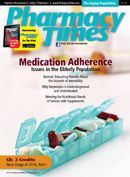Addressing Self-Care Needs of Seniors


Case 1—Urinary Incontinence
SB is an 86-year-old female who comes to your pharmacy for adult diapers. SB describes wetting herself with a small amount of urine when she coughs, sneezes, or does other strenuous tasks. She reports this has been an ongoing problem for several years, but it has recently become more bothersome. She reports feeling embarrassed as she occasionally has experienced a few episodes of incontinence with large amounts of urine, which have wet through her pants and caused her clothes to smell of urine. She has previously used absorbent pads, but feels as if the use of an absorbent undergarment material may work better. She is independent and lives at home, has no known allergies, and is currently prescribed tolterodine LA 4 mg daily for her symptoms. What are appropriate counseling points in discussing the use of urinary incontinence supplies with SB?
Answer
Urinary incontinence represents a prevalent health care problem in the older adult population. Pharmacists need to be sensitive to the personal nature of the problem, recognizing that patients may be reluctant to discuss this treatable but often embarrassing condition with other health care providers. Self-treatment for incontinence is often sought without the guidance of a physician. In assessing the patient with incontinence, the pharmacist should inquire about whether medical evaluation has been conducted to identify the type of incontinence the patient is experiencing. SB is under the guidance of a physician and her symptoms are consistent with a diagnosis of overactive bladder with urge incontinence. The purpose of using overthe- counter pads and undergarments is to alleviate the embarrassing leakage of urine and improve SB’s functioning and quality of life.
A variety of adult undergarments and absorbent pads are currently available. One factor to consider in recommending a product is whether SB prefers reusable products, which can be used multiple times and are less costly, or disposable products, which offer greater convenience at a higher expense. If the decision is made to use a disposable product, SB should be counseled about avoiding reuse in an attempt to prolong product life; changing wet products every 4 hours or according to manufacturer recommendations is suggested to avoid skin breakdown. Additionally, while use of chlorophyllcontaining products may help mask urine odor, frequent changing of undergarment products is recommended to minimize odors. Based on SB’s description of experiencing small amounts of urine leakage on exertion and occasional moderate-toheavy volumes of urine leakage, adult undergarments or briefs may be the most appropriate option for her at this time. As she is an independent, communitydwelling adult, recommending button or pull-on elastic undergarments would be reasonable. As the adult undergarment market continues to expand, if SB needs further information about the various types of products, refer her to the National Association for Continence (NAFC) to obtain a patient resource guide.
Case 2—Bone Health
BF is a 79-year-old male who comes to your pharmacy to purchase a “good calcium supplement.” He was informed by his doctor that men can get osteoporosis, too, and was instructed to start taking calcium each day for bone health. He has an allergy to morphine, reports lactose intolerance, and indicates he takes medications for dyslipidemia, hypertension, and an enlarged prostate. Identify counseling points for assuring that BF achieves adequate calcium intake.
Answer
Osteoporosis is the most common bone disorder affecting the elderly population. Adequate calcium intake or supplementation is critical across the life span to promote skeletal growth and formation. In the elderly population, adequate calcium and vitamin D intake may decrease the incidence of osteoporosis-related fractures. All individuals over age 50 are advised to consume at least 1200 mg of dietary calcium (from both food sources and supplements) in addition to 800 to 1000 IU of vitamin D each day.1,2 Increasing dietary calcium is generally recommended as a first-line approach to increasing calcium intake. Considering BF’s reported lactose intolerance, recommend that he consider increasing consumption of cereals and juices fortified with calcium. Additionally, counsel BF about the various calcium products available on the market and be sure he selects a product that includes vitamin D as well. Remind him that calcium carbonate products, containing the most elemental calcium, should be taken with food to enhance absorption; calcium citrate, although adequately absorbed when taken with or without food, contains less elemental calcium. Single doses of calcium should not exceed 500 to 600 mg per dose. PT
References:
1. National Osteoporosis Foundation. Clinician’s Guide to Prevention and Treatment of Osteoporosis. Washington, DC: National Osteoporosis Foundation; 2010.
2. Standing Committee on the Scientific Evaluation of Dietary Reference Intakes. Dietary Reference Intakes for Calcium, Phosphorus, Magnesium, Vitamin D, and Fluoride. Washington, DC: National Academy Press; 1997.
Dr. Bridgeman is an internal medicine clinical pharmacist in Trenton, New Jersey, and clinical assistant professor, Ernest Mario School of Pharmacy, Rutgers University. Dr. Patel is a clinical pharmacist in North Brunswick, New Jersey, and clinical assistant professor, Ernest Mario School of Pharmacy, Rutgers University.

